#MEXICAN TALAVERA TILES
Explore tagged Tumblr posts
Text

A small edit from my white hellhound 🐩
#hellhound#artists on tumblr#danielamv#illustration#drawing#tradicional art#edit#animal#monster#dog#beast#wild#teeths#fangs#red aesthetic#mexican talavera tiles#aesthetic#blue eyes
86 notes
·
View notes
Text

Aprendimos mucho de los diseños en azulejos, pero estos son muy específicos, se les llama talaveras y son muy icónicos en la cultura mexicana fuu!
We learned a lot about some mexican designs in tiles, but these are specific ones, they're called "talaveras" and they are very iconic in mexican culture fuu!
#bunny#kawaii#illustration#rabbit#cute#kawaiiart#うさぎ#ゆるいイラスト#イラストレーター#drawing#mexican talavera tiles#talavera#cute illustration#cute art#kawaiidrawing#kawaiistyle#mexican#mexico#tiles#azulejos#azulejo#pattern#mexican artist
58 notes
·
View notes
Text
hice el trend de army dreamers
Mi oc se llama Lulu, es una lolita harajuku inspirada en la talavera mexicana 🩵🏵
#creator vs oc#army dreamers#mexico#artists on tumblr#digital art#mexican artist#oc art#my ocs#oc#harajuko fashion#harajuku#mexican talavera tiles#mexican culture
2 notes
·
View notes
Photo

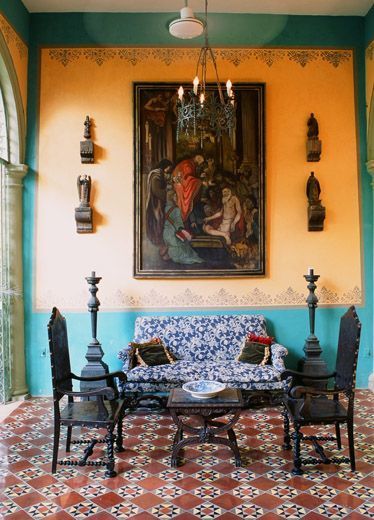

Hand-painted Talavera tiles have their roots in the Spanish colonial period, blending the techniques and influences from Spanish, Italian, and Moorish or even Asian pottery traditions. Introduced to Mexico in the 16th century, these decorative tiles quickly gained popularity, adorning churches, monasteries, and grand haciendas. Today, their production is still centered in Puebla as well as San Miguel de Allende and has become a source of pride for Mexican artisans. One cannot help but be captivated by the artistic mastery displayed in Mexican Talavera tiles. Each tile is carefully hand-painted with a wide range of colors, often featuring floral motifs, intricate geometric patterns, and even scenes from Mexican folklore. The detailed craftsmanship and precision make each tile a work of art in its own right, showcasing the dedication and talent of the artisans who create them. When choosing your favoirte patter, remember that colors hold deep symbolism in Talavera tiles from Mexico. The cobalt blue, a prominent shade, represents the influence of Spanish pottery, while the vibrant yellows and greens draw inspiration from Mexican landscapes and flora. Symbolism also plays a role, with certain patterns and motifs carrying cultural significance. Understanding the meanings behind these colors and symbols adds another layer of appreciation to the beauty of Talavera tiles.
While rooted in tradition, decorative Talavera tiles have seamlessly transitioned into modern design aesthetics. From kitchen backsplashes to bathroom accents, these tiles add a touch of authenticity, warmth, and vibrancy to any space. Interior designers and homeowners alike are increasingly incorporating Talavera tiles into their projects, creating unique and visually striking environments that pay homage to Mexican heritage. Handmade Talavera tiles continue to enchant and inspire with their timeless beauty and cultural significance. From their origins in Puebla to their versatility in contemporary design, these handcrafted treasures have stood the test of time. Whether used in traditional or modern settings, Talavera tiles celebrate the rich artistic heritage of Mexico and allow us to discover the captivating beauty that lies within each meticulously crafted tile.
#handmade talavera tiles#mexican talavera tiles#mexican tile#mexican tiles#talavera tiles#MexicanTileStore#mymexicantile
12 notes
·
View notes
Text

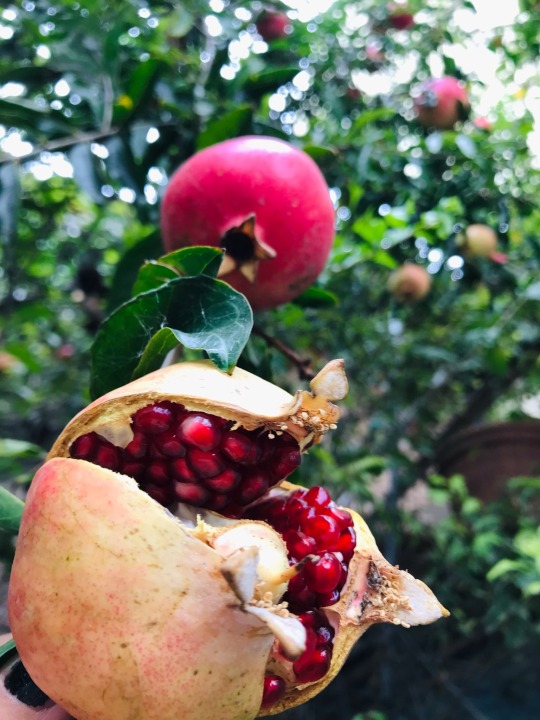

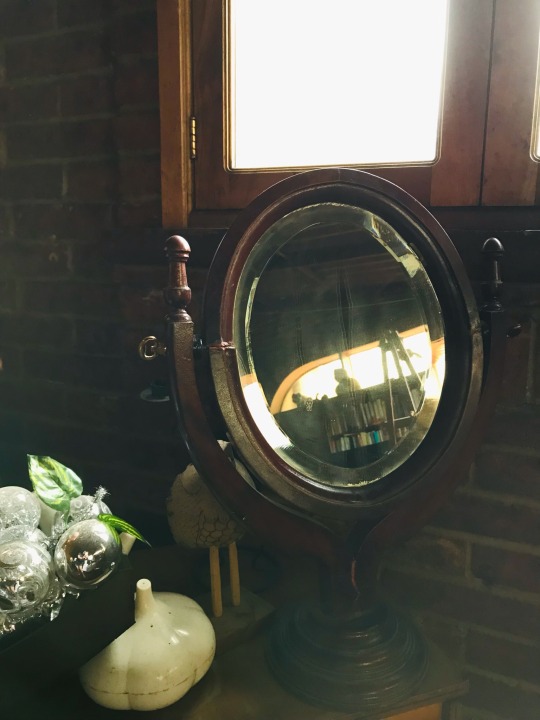
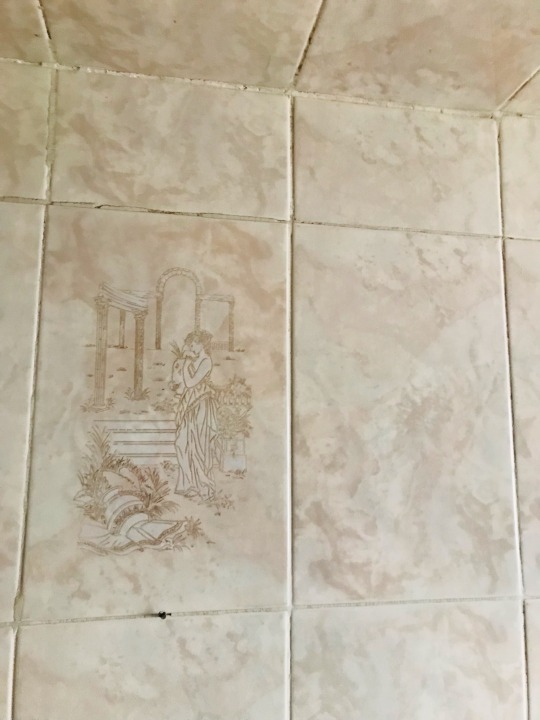


Mi casa es muy “aesthetic” Pt 1
CDMX
Julio 2023
#ciudad de méxico#aesthetic#mexican talavera tiles#blue#house#artemexicano#mexico#tradicional art#architecture#soft life#green#aestheitcs#tranquility#dream house
6 notes
·
View notes
Text
Finally, complete your luxurious retreat with a few show-stopping pieces like an iron mirror and a copper freestanding tub. An iron mirror brings a rustic elegance to the room, with its timeless, wrought-iron frame that complements the traditional feel of Talavera tiles. These mirrors capture and reflect light beautifully, enhancing the space’s ambiance and adding depth. For an ensuite or open-concept bedroom, a copper freestanding tub adds a true statement piece. The rich patina of copper not only brings warmth but also develops a unique finish over time, making each tub uniquely yours. This pairing of earthy, artisanal decor and modern custom appliances creates a bedroom space that’s sophisticated, comfortable, and utterly unique—a true haven that reflects your style. By blending luxury and cultural charm, you can transform your bedroom into a space where elegance, tradition, and innovation meet in perfect harmony.
#bedroom copper bathtub#bedroom decor#bedroom talavera tiles#ceramic tile murals#copper freestanding bathtub#copper freestanding tub#copper tub#custom copper tubs#custom iron mirror#custom-made copper appliances#freestanding copper tubs#iron mirror#Mexican Talavera tiles#mycustommade#custommade
0 notes
Text
Furthermore, Talavera wall murals are highly durable and easy to maintain, making them a practical choice for a kitchen environment. Their resistance to moisture and heat means they can withstand the rigors of cooking while remaining stunningly beautiful over time. By choosing ceramic tile murals, you’re investing in a timeless element of décor that will impress your guests and family alike. Ultimately, embracing the vibrant world of Mexican handmade tiles allows you to create a unique kitchen design that is not only functional but also a true reflection of your personality and appreciation for art. With these murals, your kitchen can become a canvas for cultural expression and a celebration of color and craftsmanship.
#Mexican handmade tiles#unique kitchen design#Talavera wall murals#Mexican Talavera tiles#Mexican interior design#Mexican art#myrustica#kitchen tie murals#Ceramic tile wall murals#Ceramic tile wall mural
0 notes
Text
1 note
·
View note
Text
0 notes
Text
May 31, 2023 Wednesday - Surprise gift of tea
A surprise gift of tea made my day at work! Thank you!! I took this picture in the morning.
See my new cactus in my Mexican talavera flower pot.
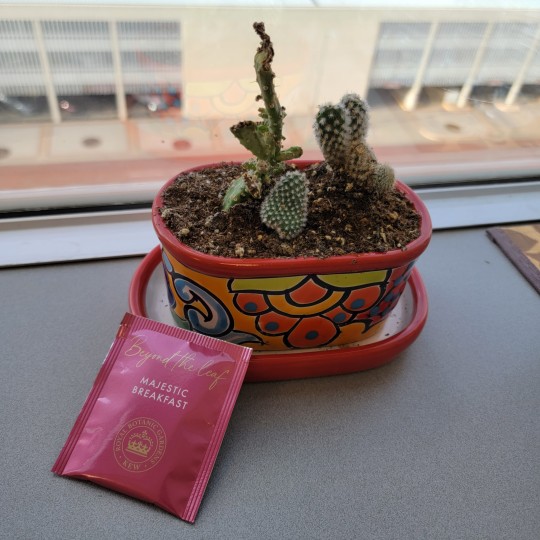
1 note
·
View note
Text
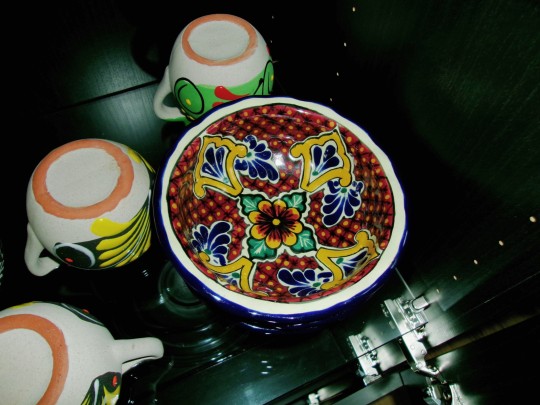
0 notes
Text
Another advantage of using Talavera and terracotta tiles for outdoor flooring is their natural compatibility with various landscaping elements. The warm earth tones of terracotta Mexican tiles provide an excellent backdrop for colorful plants, lush greenery, and outdoor furniture. Talavera tiles, with their vibrant colors and intricate patterns, can match or contrast with garden blooms, enhancing the aesthetics of your outdoor area year-round. Since these tiles are often handmade, they add an artisanal touch that makes your space feel both personal and timeless. Whether you’re creating a patio, walkway, or garden centerpiece, combining colorful Talavera with solid terracotta floor tiles can truly elevate your garden into a Mediterranean or Southwestern-inspired haven.
#mexican tiles#mymexicantile#mexican talavera tiles#garden tiles#hand-painted Talavera tiles#high-relief Talavera tiles#outdoor flooring with Talavera tiles#patio tiles ideas#terracotta floor tiles#terracotta tiles#solid-color floor tiles#terracotta Mexican tiles
0 notes
Note
Can I say that your incorporation of South/Latin American culture in ABM is just mwah 👌 chef's kiss.
Like- I just now realized that Heaven was supposed to be the mythical City of Gold, El Dorado (I could entirely be wrong though, please correct me if I am)
Just ugh- so good.
I'm not Latin American, I am African American so I'd love to no more about references to your culture that I didn't see because I'm not familiar with it. I love nothing more than seeing other people's cultures in media.
ASHJKA thank you!! I always love it when people point out all the Latin Americanisms. There's a point to it obviously -- ABM is personal, so I let it be personal in this silly way. And it's a bit political --- making Heaven look like a region where Catholicism was very violently imposed on the native population. (The vast majority of the characters - Lucifer, Michael, Baal, Rosier, for ex., are also explicitly brown-skinned, which is intentional. There are also characters who are explicitly Black: Uriel and Azazel).
I have a lot to say about it so!! :
Heaven isn't El Dorado! I actually think the golden roads are super tacky, but it's biblical! Heaven is described as having golden streets in the Book of Revelation! I don't blame you for thinking that though!!
Mannn, there's so many little things about ABM that are little nudges to Mexican or Latin American stuff. The really obvious thing might be Rosier and Asmodeus' house! I actually based it off a house I saw in central Mexico a few years ago that I never forgot. A lot of Heaven has that kind of "colonial Latin America" feeling; again, it's this really subtle political thing and also because I would just really love to live in that house I saw :'). This is basically what I was actually describing with the exterior of Rosier's house, plus the Mexican-style talavera floor tiles:
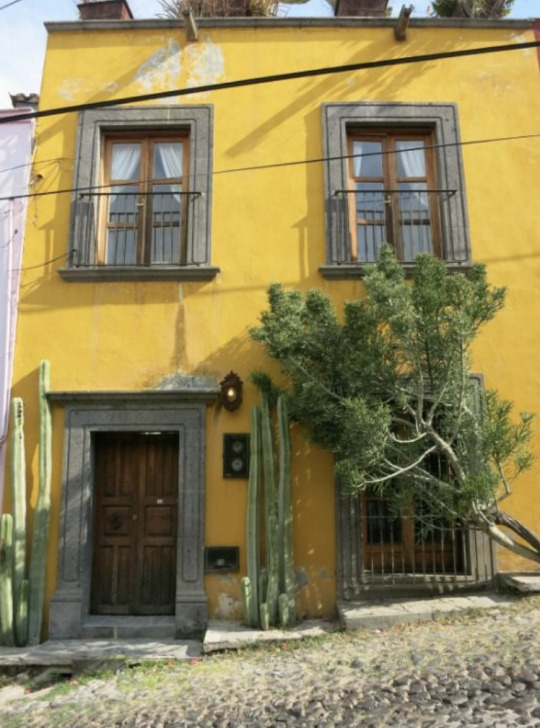

And Michael's house!! A tiny joke about Michael's house is that the stairway up into the actual living area, the gate before the stairs, and the flat roof (stuffed with a bunch of stuff) is just a typical lower-middle-or-lower class Latin American house haha. It's tough to find a good picture of what I mean, but this is sorta what it's based off:
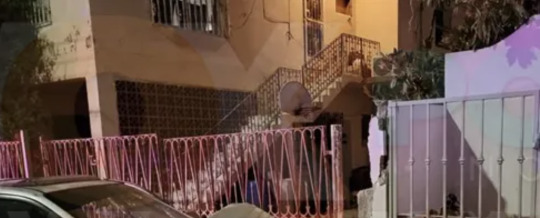
The plaza at the center is also just a fairly typical Latin America plaza (at least in my head) but I did keep that one vague. Something a little more obvious is the description of Heaven's streets very early in the book as narrow with colorful homes that are pressed so close together that they resembled one. I took this from colonial LatAm, as well :) :

And clothes!! Angels usually wear tunics, but sometimes I allude to them being in a more Mex/Central-American style, such as the part where Lucifer's tunic is embroidered by the collar with lavender. I also mentioned golden filigree earrings, which I took from the typical Mexican ones. Examples:
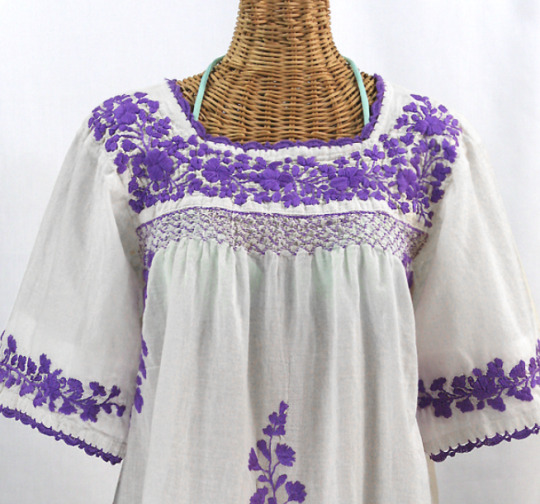
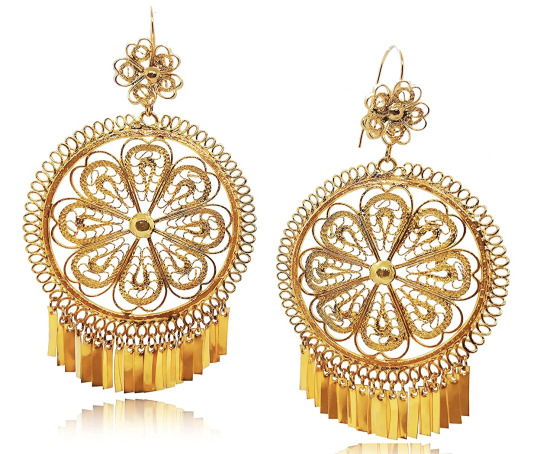
Another thing is all the emotional emphasis on hair braiding, like when Rosier says he’s braiding love into Lucifer’s hair, then Michael braiding Lucifer again when they’re on Earth. It’s also mentioned that some angels have ribbons in their braids (for ex., Asmodeus in the scene before Michael chases Lucifer). Braids are pretty culturally important in greater Latin America, though I was mostly thinking of the indigenous-Mexican braids that lots of people are familiar with :) It’s something I am personally really connected to:
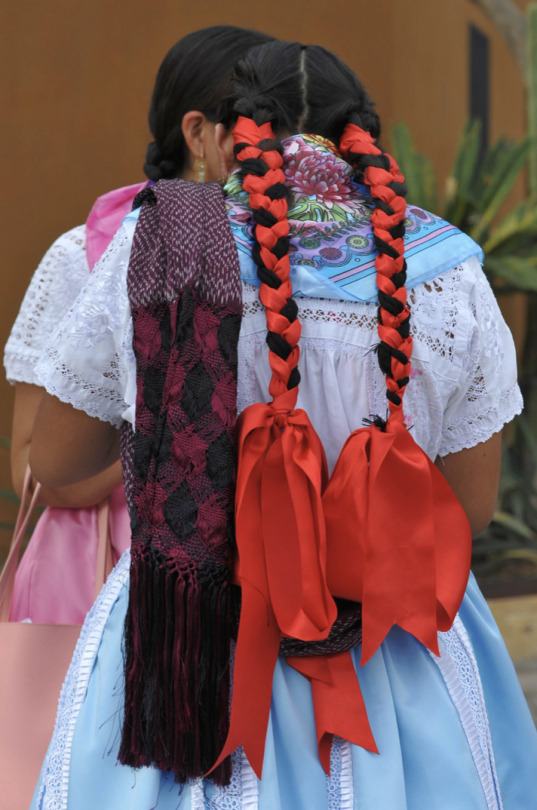
Some other little things:
Asmodeus drinking yerba mate (Central South and Lower South American)
Michael chewing coca leaves (Andean)
Lucifer cooking with chayote and jalapeño for his very Mexican soup
All the references to spicy food and beans
The rhythm-heavy music and hip-shaking dancing is pretty Latine! I like to say that they're constantly listening to cumbia,
Angels being obsessed with gossip is a little point about how Christian communities are two-faced, surveilling, judgmental, and controlling -- it's also a little joke about Latine people being gossipy haha
The exploration of Christianity in ABM is informed by my personal experiences with Mexican Catholicism and its authority figures, so a lot of my ""critiques"" (I wouldn't really call them that) in the book are about how God, angels, and Satan are conceived by Mexican Catholics. I'd also be lying if I said that I didn't make the angels so genderqueer to go against the aggressive machismo (toxic masculinity) associated with Mex Christianity.
I think this does kind of matter since Christian groups are really different everywhere and have different interpretations, and I never intended to do a big broad exploration of Heaven that would account for everyone, nor do I think that's possible or would be worth much. I wanted to write about my Catholicism and my God, and so I did.
! On the topic of machismo, I actually originally intended to write God as a much more clear cut representation of the typical Christian macho father figure of Latin American families. This would have involved him being physically abusive and hitting Lucifer occasionally, along with more verbal insults. (I considered making him whip Lucifer with a leather strap, to parallel Mexican fathers hitting their children with a belt. There was even dialogue planned where he would berate Lucifer for his femininity, particularly his gestures). I moved away from this concept for a couple reasons but a big one is that I assumed people would think I was making him over-the-top evil if I made him slap or punch Lucifer. (And for any Latines reading this, no I don’t think all Latine fathers are like this but this is undoubtably… a societal problem). (Some people already think I made God “too evil,” so now I wonder how much angrier readers would be if the whipping had been kept in aha)
Oh and one final thing -- I'm really happy you like the incorporation of my culture into the book!!! It was one of my main worries when I was still querying to traditionally publish :') So thank you
#this book is a COMEDY tbh#i almost wrote them wearing ponchos and making tamales too HAHAHSJAD#ive been wondering if i should make it even MORE Latin American just for fun#you know if it gets rereleased#;)#ask#mine#angels before man
53 notes
·
View notes
Text
Ultimately, the key to making your sink area a true focal point lies in the combination of materials and textures. Whether you prefer rustic or modern design, mixing custom-made copper sinks with original kitchen counters and Mexican Talavera tiles can create an irresistible visual appeal. These elements work together to draw attention to the heart of your kitchen, where function meets artistry. By thoughtfully designing around your sink, you can enhance the room’s overall ambiance, ensuring that every detail, from the decorative apron front to the vibrant backsplash, contributes to the space’s unique style and personality.
#custommade#mycustommade#copper sinks#custom-made copper sink#decorative apron front#farmhouse copper sink#kitchen copper sink#kitchen copper sinks#Mexican Talavera tiles#original kitchen counters#unique kitchen backsplash
0 notes
Text
Outside, your garden or patio can be transformed into a colorful autumn retreat with Mexican Talavera tiles. The vibrant, hand-painted patterns and colors can contrast beautifully with the darker, earthy tones of fall, making your garden space lively yet cozy. In your dining area or entryway, a black iron chandelier can serve as an elegant focal point. The classic, timeless design of black iron adds a layer of sophistication while maintaining the warmth and coziness you seek for the season. Whether indoors or out, these touches will help you embrace the essence of fall, creating a space that feels not only cozy but also refined and full of character.
#black iron chandelier#hand-made copper appliances#Mexican Talavera tiles#myrustica#falll design ideas#home for fall#iron lighting fixtures#copper range hood
0 notes